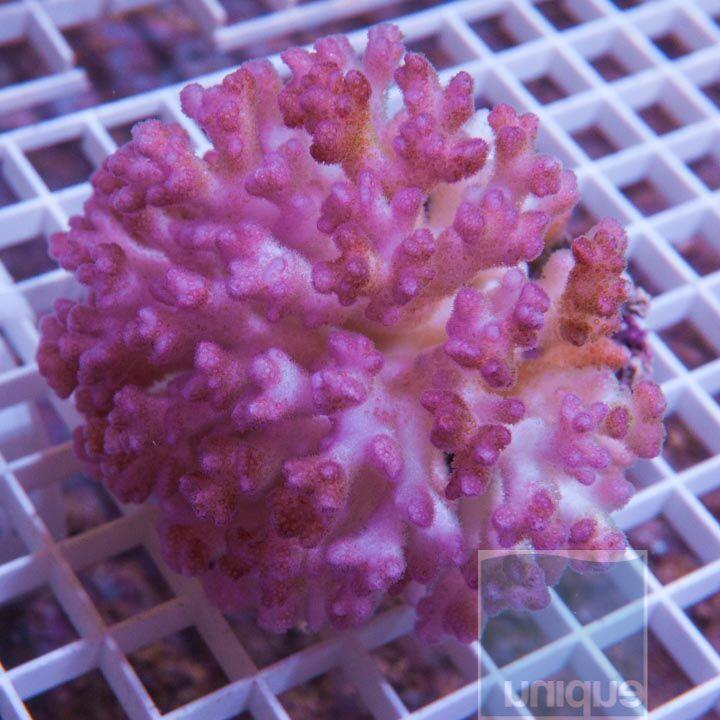Hello,
I love all SPS corals, however I have a slight obsession with seriatopora, stylophora, and pocillopora species. I have kept all types of SPS, but these have always been my favorite. I am always looking for new additions, but I find it very difficult to locate places where I can find truly unique ones.
For example, I bought a frag of a yellow stylo with white polyps from a shop in Canada (raging reef) and brought it back into the US. I housed it in my IM 20 for a couple months while I was attending college, and when it came time to bring it back to my 90 display in Connecticut, it died in transit. It was beautiful and I was devastated, and unfortunately, I have not found another one like it. I want to create a database (of sorts) of these types of corals. Pictures, vendor names, scientific names, experiences, care, stories, what have you. I always find myself searching deep on the internet for new types, however, it always amazes me what members already have. All content is welcome.
Research turned into a write up for me. I was shocked at the amount of coral out there! Regardless, I just figured this would be important information to put on an all things stylo, poci, and birdsnest thread. Hopefully you all find this as interesting as I did. Below I will outline this family of coral. I am not a scientist, but I will attempt to explain the types and provide pictures for context.
To Start:
Seriatoporas, stylophoras, and pocilloporas, often shortened to stylos, pocis, and birdsnest (reef slang to encompasses the entire family of seriatorporas) are a genus of coral that belong to the family of Pocilloporidae. All corals in the family of Pocilloporidae are native to the Pacific and Indian Oceans. Corals in this family generally inhabit shallow reefs. These species are known to be hardy and often survive bleaching events in the ocean (hence their hardiness in the home aquarium).
Seriatopora - Common Name: Birdsnest
There are six known species of seriatopora. Often titled the birdsnest coral, this species grows on shallow reefs, and is best known for its erratic growth patterns.
Seriatopora aculeata
- This species is native to the Indo-Pacific and West Pacific, growing in shallow reef environments at depths up to 40 meters. This is an uncommon seriatopora species. Colonies possess pencil-thick, short and tapered branches, that usually fuse into clumps. Colonies are often pink or cream in color.
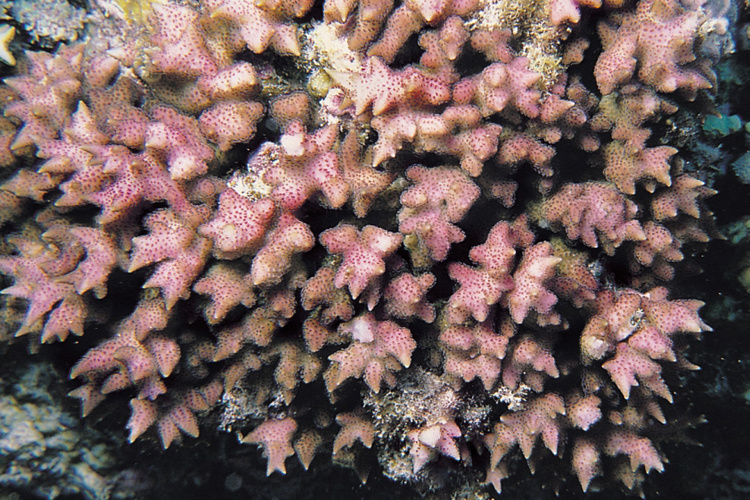
(S. aculeata. https://www.fisheries.noaa.gov/species/seriatopora-aculeata-coral)
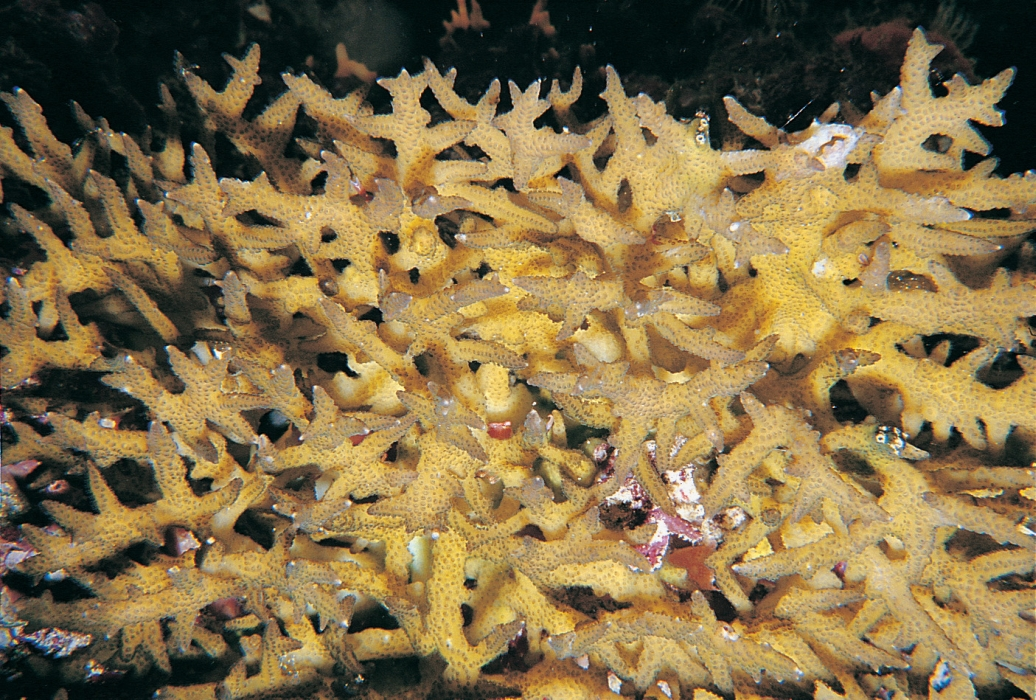
(S. aculeata, Solomon Islands. https://coral.aims.gov.au/factsheet.jsp?speciesCode=0722)
Seriatopora caliendrum
- S. caliendrum is a common species both in the wild and in the reefing hobby. It grows in a bushy clump, forming the quintessential birdsnest pattern. It inhabits shallow water in the Indo-Pacific on reef slopes at depths up to 25 meters. Colors range from cream, to pink, to green.
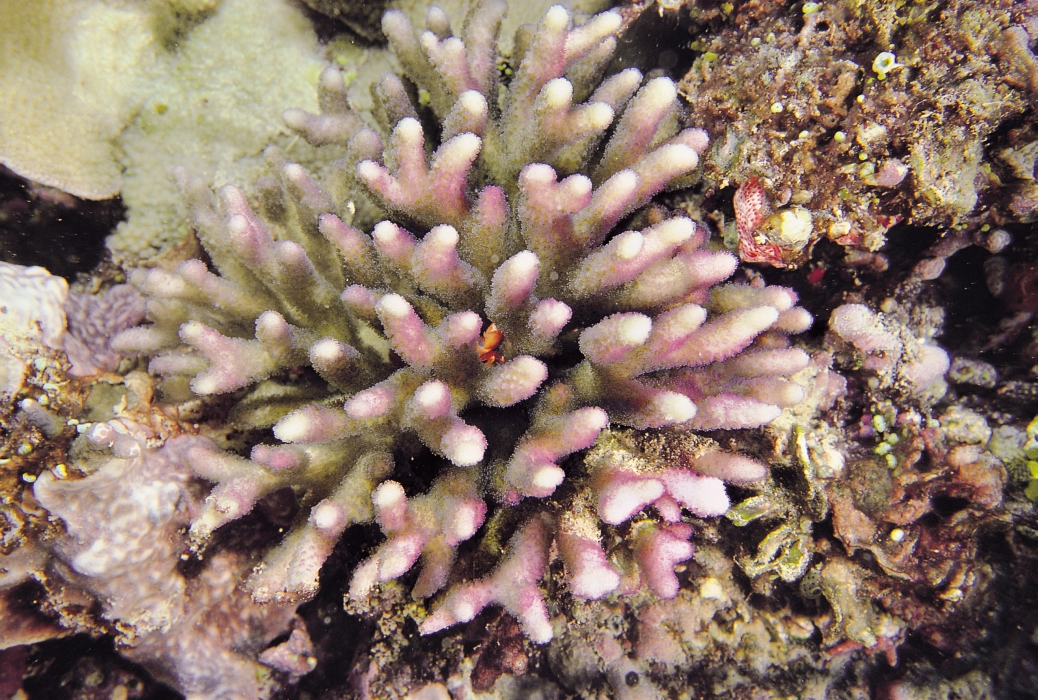
(A wild S. aculeata. Great Barrier Reef, Australia. https://coral.aims.gov.au/factsheet.jsp?speciesCode=0341)
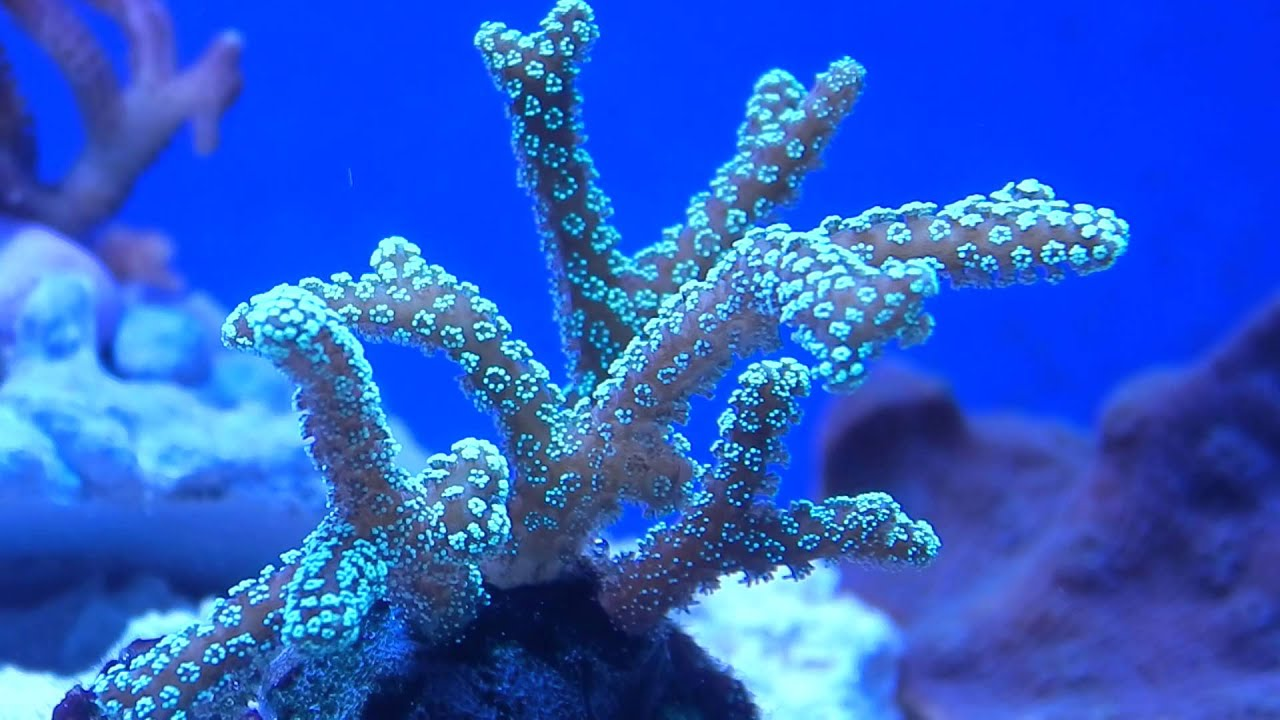
(S. aculeata in captivity. A “green birdsnest coral.”)
Seriatopora dentritica
- This is a newer species, classified in 2000. Similar to other species of birdsnest, it has thin and tapered branches that come to a sharp point. However, the growth pattern differs as branches are widely spaced and are less than 4 inches long. Additionally, polyps only extended at night, giving it an almost acropora like appearance.
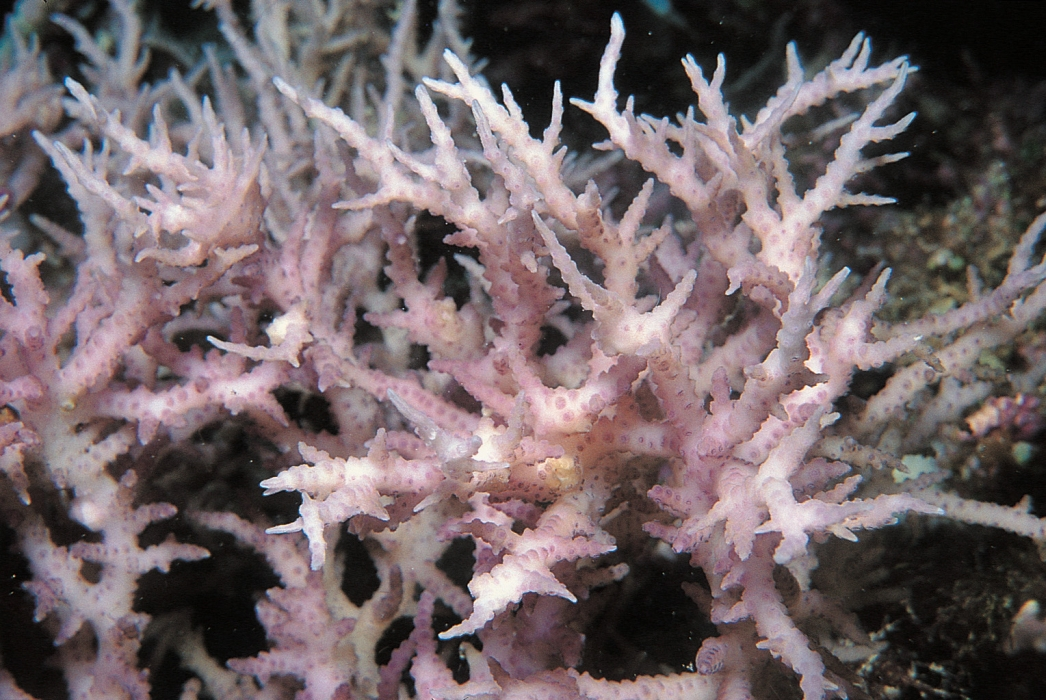
(S. dendritica.Papua New Guinea. http://coral.aims.gov.au/factsheet.jsp?speciesCode=0764)
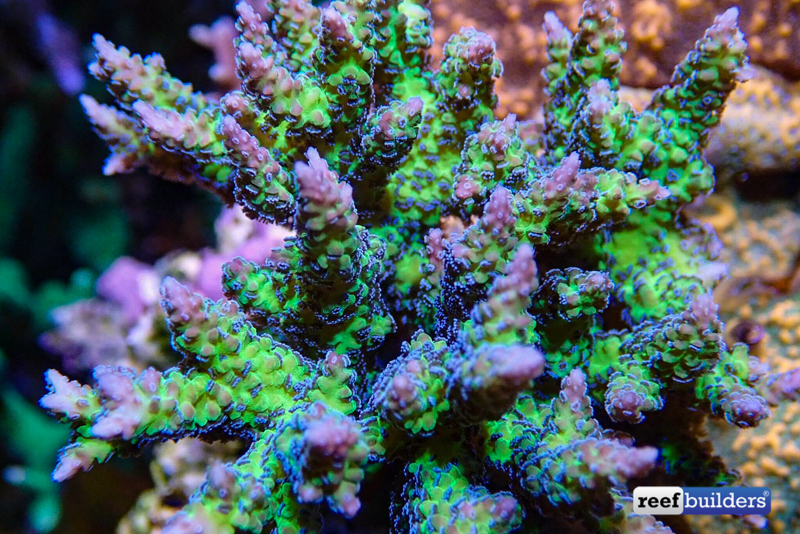
(S. dendritica, in cativity. https://reefbuilders.com/2018/11/14/seriatopora-dendritica/)
The picture above has been taken from a ‘reefbuilders.com’ article dated November 2018. Apparently this S. dendritica species was collected from Australia and placed in captivity.
Seriatopora guttatus
- Unlike other species of seriatopora, S. guttatus has thick branches with rounded tips. This species is native to the western Indo-Pacific region. It grows in shallow water on sheltered reef slopes to depths of 40 meters.
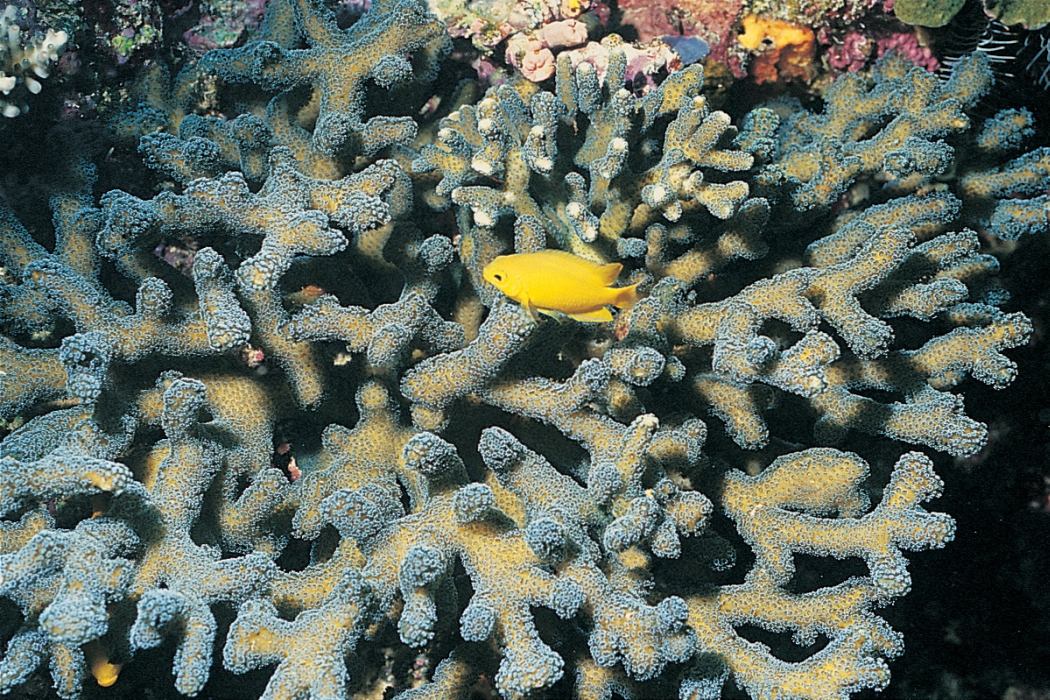
(S. guttatus.Indonesia. http://coral.aims.gov.au/factsheet.jsp?speciesCode=0809)
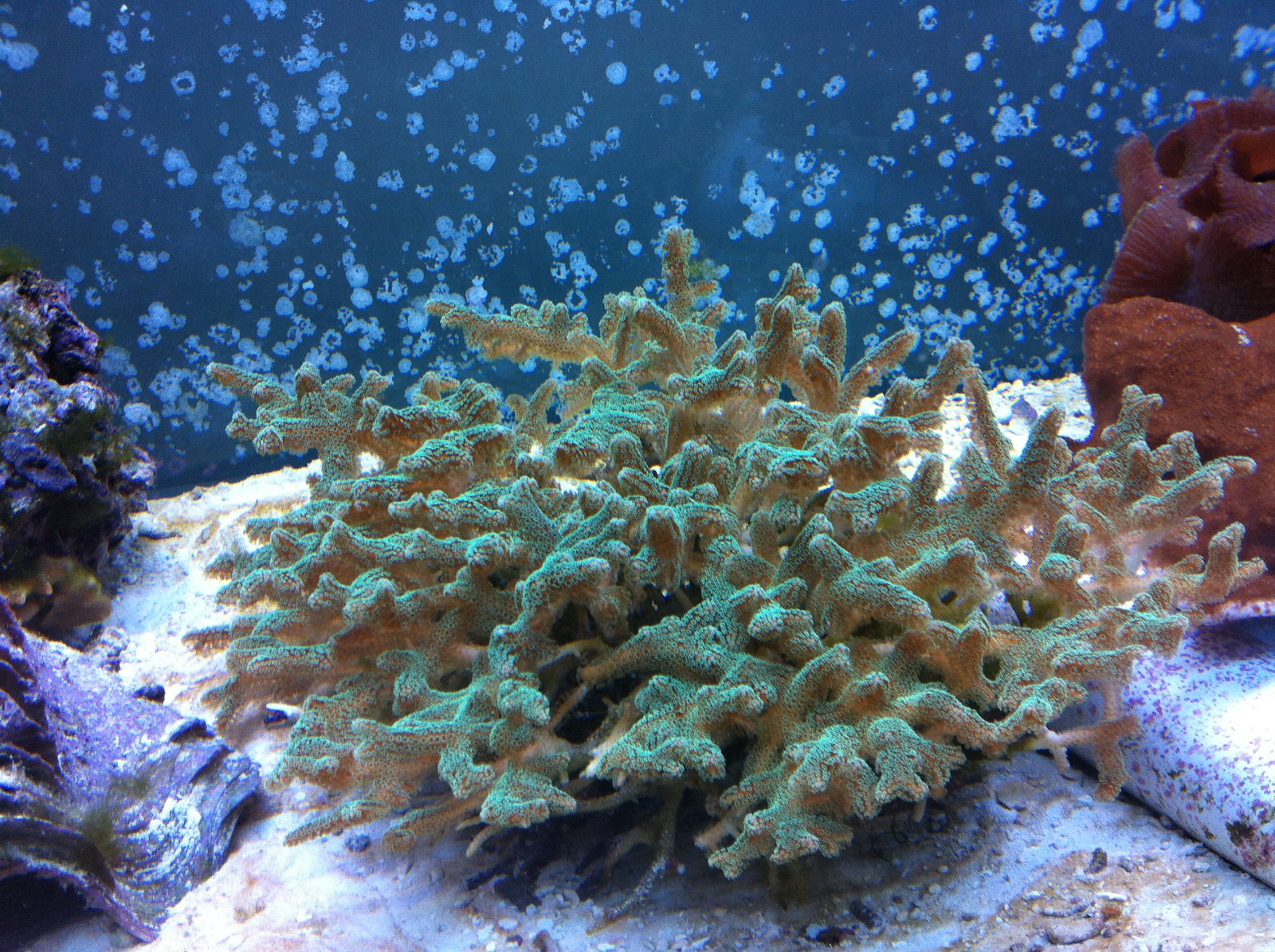
(S. guttatus colony in the home aquarium. https://reeftank.devonmorton.com/2014/02/02/green-ora-birdsnest-coral-seriatopora-guttatus/)
Seriatopora hystrix
- S. hystrix possesses pointy needle like branches and grows in a wild clump. It is native to the Indo-Pacific region and inhabits reefs and reef flats at depths between 3 and 15 meters.
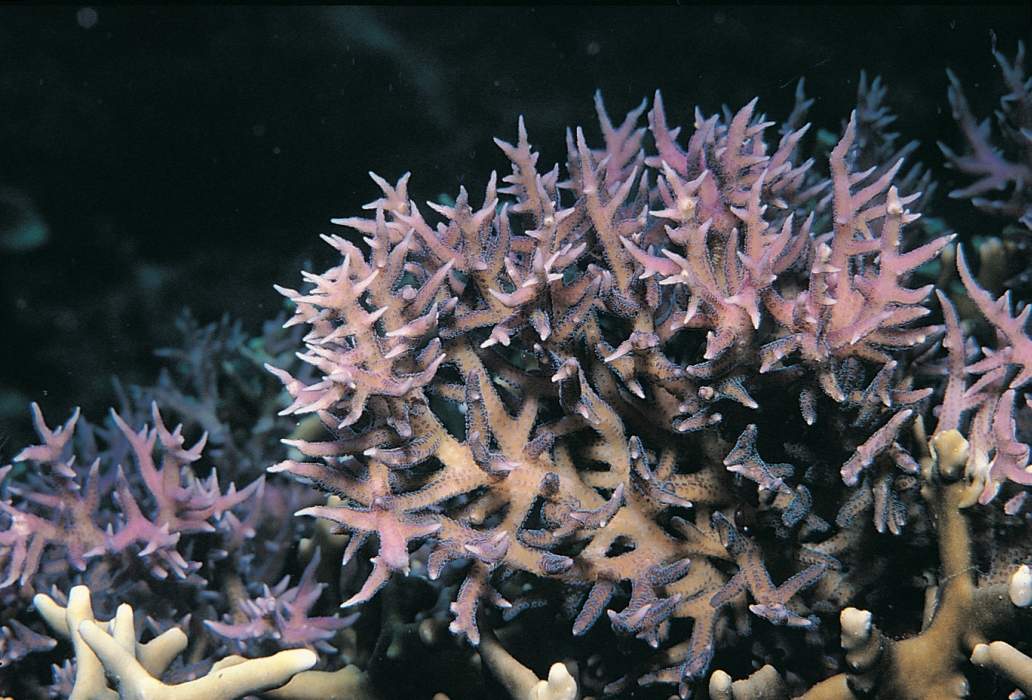
(Wild S. hystrix. http://coral.aims.gov.au/factsheet.jsp?speciesCode=0342)
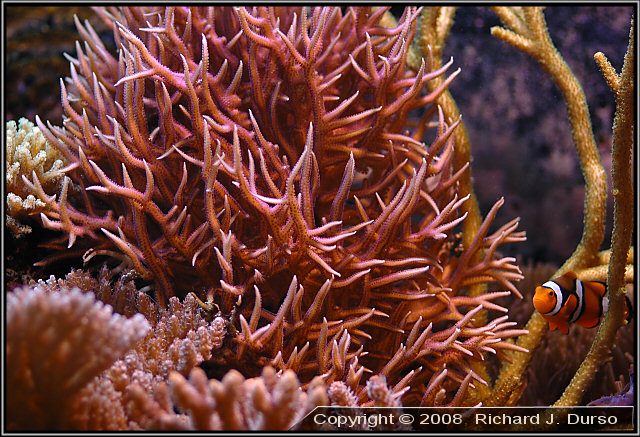
(a pink S. hystrix in the home aquarium. http://www.rl180reef.com/gallery/livestock/sps-corals/30-seriatopora/116-seriatopora-hystrix)
Seriatopora stellata
- This species has pointed tips like that of the hystrix, but has thicker branches (often 4-9 millimeters in width). It grows in shallow water on sheltered reef slopes at depths of around 20 meters in the indo-pacific. Similar to S. dendritica, the polyps of this species only come out at night. Although this species may appear to be similar to S. dendritica, it differs in branch thickness and growth pattern. Unlike S. dendritica, S. stellata grows in a more uniform pattern.
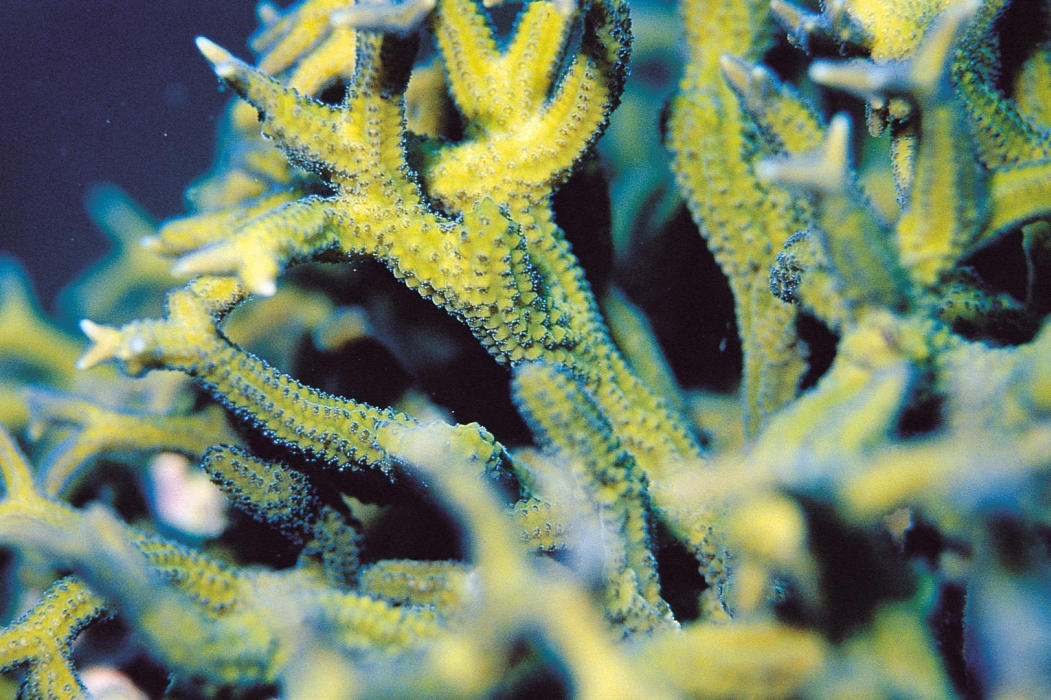
(S. stellata. Taiwan. https://coral.aims.gov.au/factsheet.jsp?speciesCode=0910)
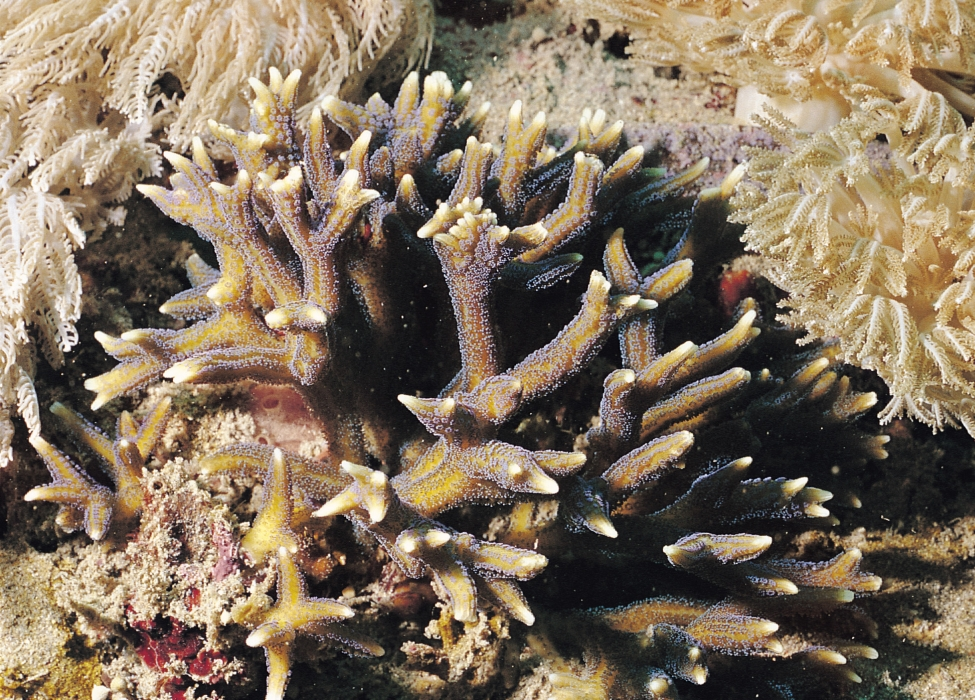
(S. stellata. Palau. http://coral.aims.gov.au/factsheet.jsp?speciesCode=0910)
Stylophora - Common Name: Stylo, Cat's Paw Coral
This species of coral is native to the Red Sea and the Indo-Pacific region. There are 14 known species of stylophora and each possesses unique characteristics.
The 14 are....
S. confusa, S. danae, S. erythraea, S. flabellata, S. gigas, S. granulata, S. kuehlmanni, S. lobata, S. madagascarensis, S. mamillata, S. minuta, S. pistillata, S. subseriata, S. wellsi.
Wow, probably a lot more stylos than you thought right? In the name of brevity, I will cover a few.
Stylophora danae
- Here is a rare species of stylophora that only inhabits the Red Sea, and the Indo-Pacific. Similar to seriatopora species, S. danae grows in an unpredictable pattern and will fuse together. The species is know to be brown in color.
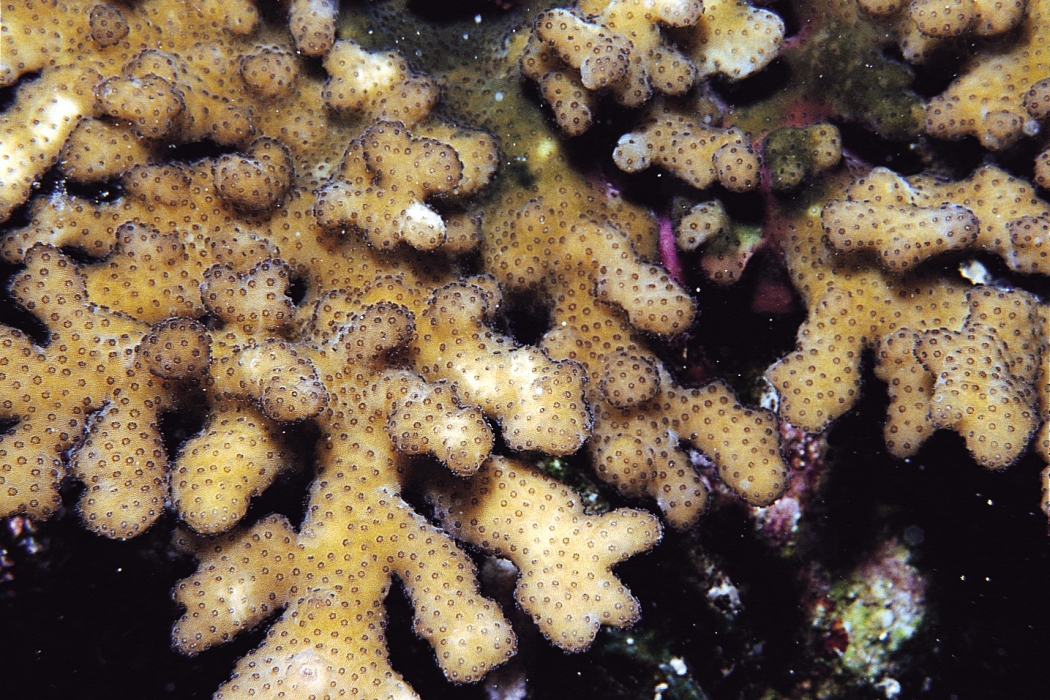
(S. danae. Red Sea. https://coral.aims.gov.au/factsheet.jsp?speciesCode=0885)
Stylophora kuehlmanni
- This is another rare species of stylophora, only inhabiting the Red Sea. S. kuehlmanni has thin branches with raised polyps that give it a spiny appearance. As shown in the picture below, is a truly beautiful species.
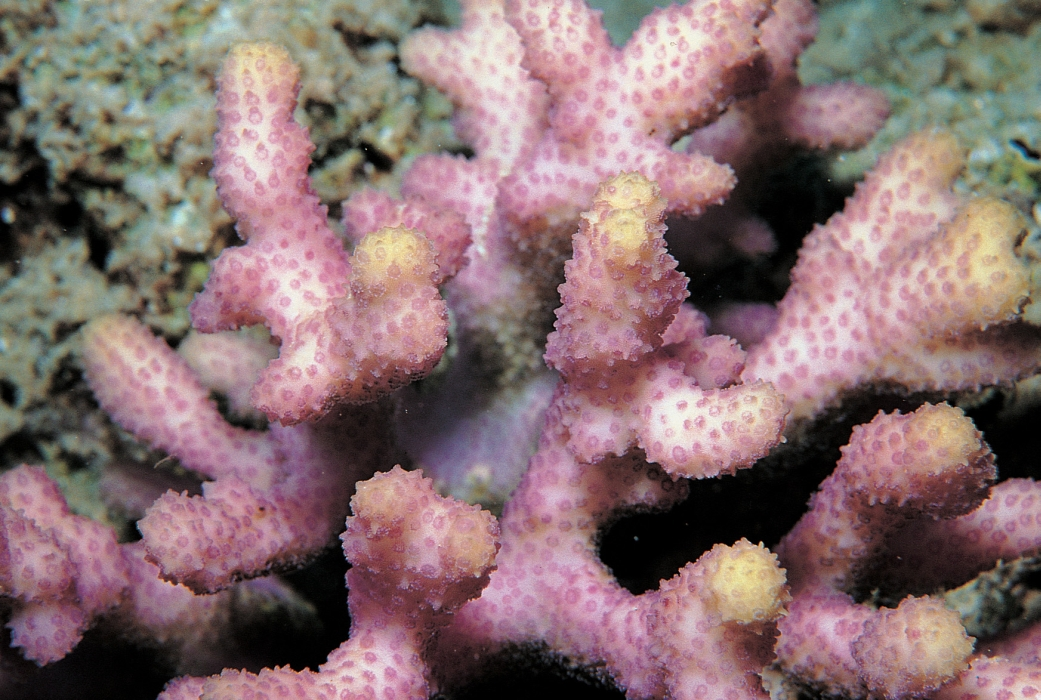
(S. kuehlmanni. Red Sea. https://coral.aims.gov.au/factsheet.jsp?speciesCode=0793)
Stylophora madagascarensis
- This species only inhabits reefs around the Island of Madagascar. Colonies have thinner branches, and grow irregularly upward. Like some species of seriatopora mentioned earlier, S. madagascarensis is unique as its polyps only extend at night, giving it an acropora like appearance during the day. It ranges in color from brown to pink, and lives in shallow reef environments and sheltered lagoons, another truly beautiful species.
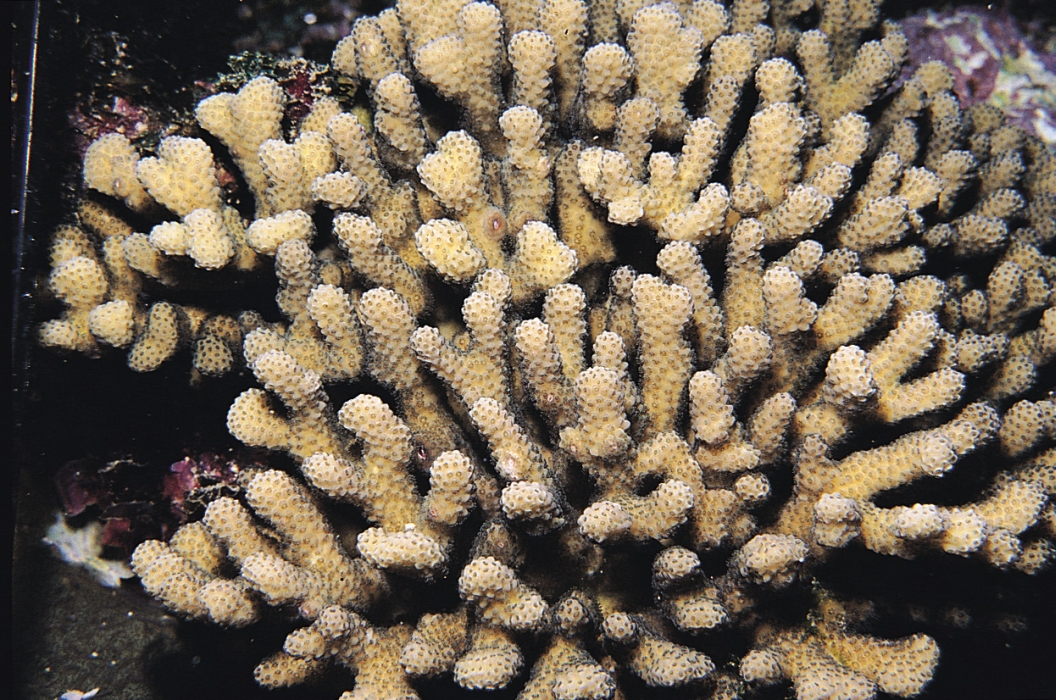
(S. madagascarensis. Madagascar. https://coral.aims.gov.au/factsheet.jsp?speciesCode=0661)
Stylophora mamillata
- S. mamillata is a unique species as it grows in very small encrusting colonies, often around 6 inches across. The coral will grow small mounds that do not develop into branches. The coral exhibits pink and cream colors and is native to the Red Sea.
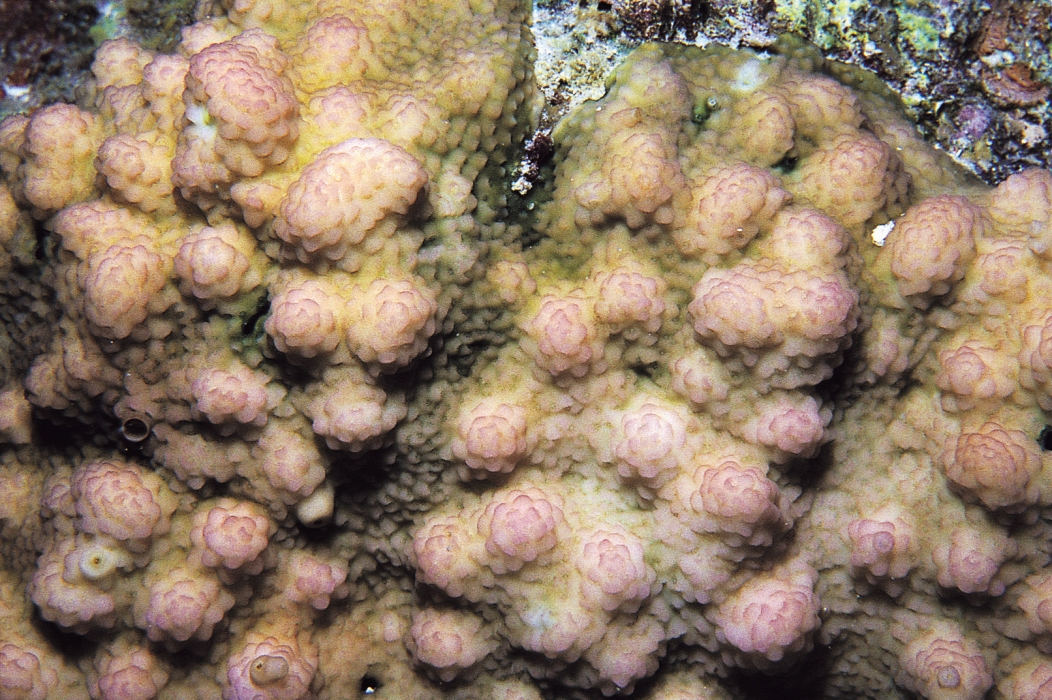
(S. mamillata. Red Sea. https://coral.aims.gov.au/factsheet.jsp?speciesCode=0886)
Stylophora pistillata
- S. pistillata is a very common species of stylophora, and may be what you think of when you hear the word stylo. Colonies branch but have club like extensions. This species also exhibits a variety of color, colonies can be blue, pink, brown, green, and purple. This is a shallow water species that is frequently exposed to waves and currents.
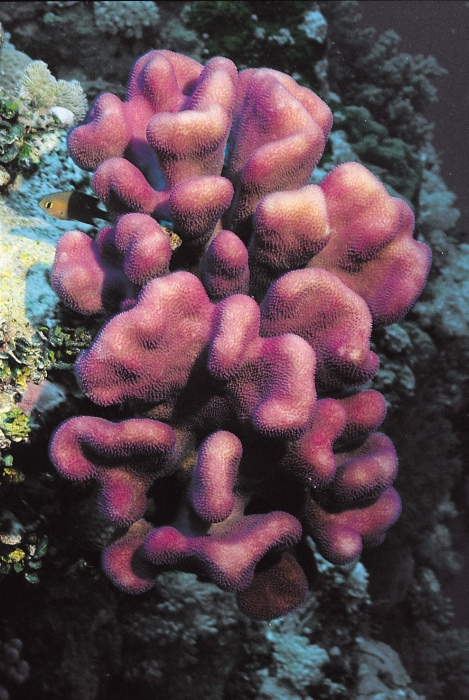
(S. pistillata. Great Barrier Reef, Australia. https://coral.aims.gov.au/factsheet.jsp?speciesCode=0345)
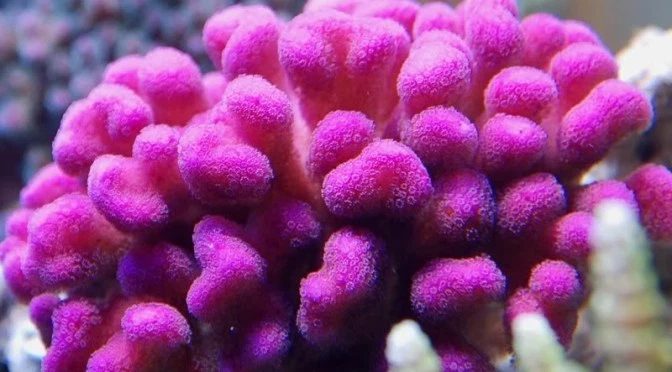
(S. pistillata in captivity. https://tropicseanomad.wordpress.com/work/coral-profile/stylophora-pistillata/)
Stylophora subseriata
- Colonies of this species have thinner branches that grow irregularly upwards. This species inhabits the Red Sea, coastal reefs in Africa, and the Indo-Pacific. This species exhibits a variety of colors such as pinks, greens, and browns. Like S. pistillata, this is another common species in the aquarium trade.
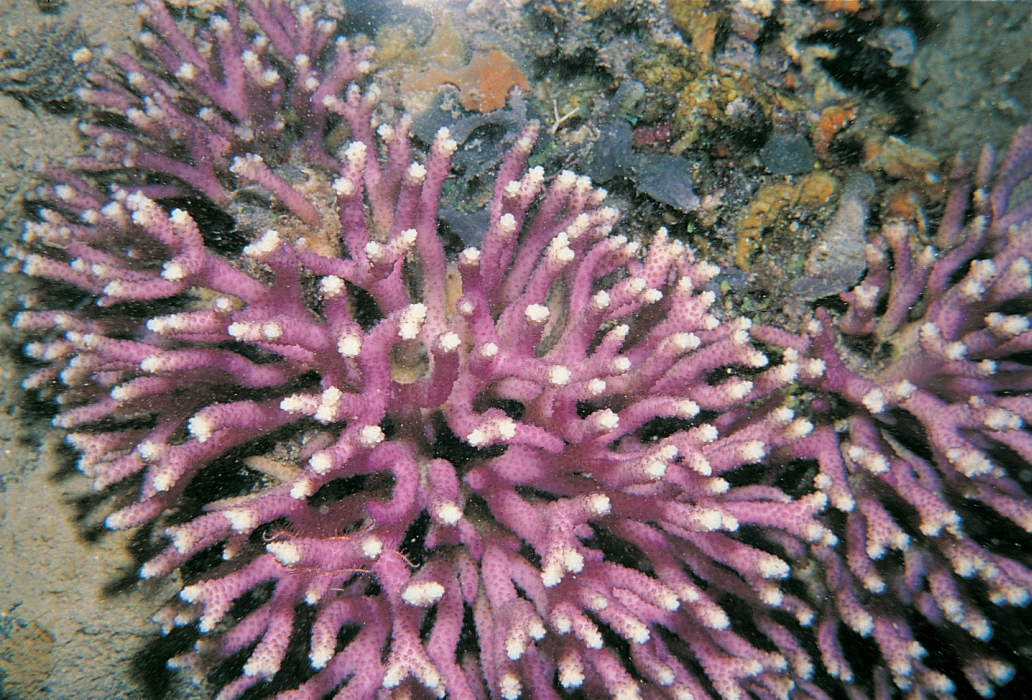
(S. subseriata. Papua New Guinea.https://coral.aims.gov.au/factsheet.jsp?speciesCode=0883)
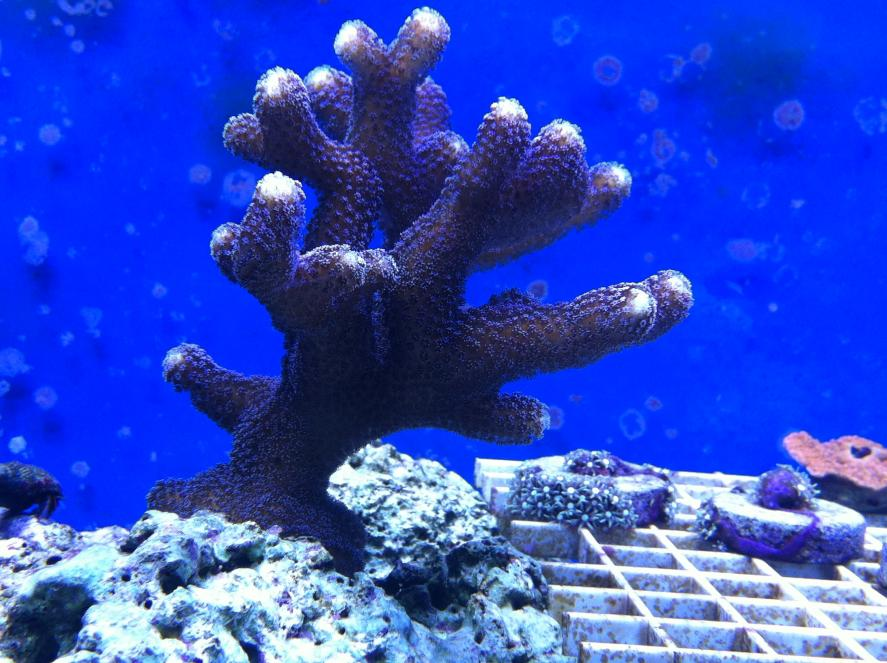
(a frag of S. subseriata. In the home aquarium. https://www.reef2reef.com/threads/is-this-a-stylophora-or-a-pocillopora.91730/)
Stylophora wellsi
- Similar to S. mamillata, S. wellsi also grows in small, clumped, and encrusting colonies. Colonies have short knob like branches with rounded ends. This species inhabits shallow reefs with a lot of wave action and current.
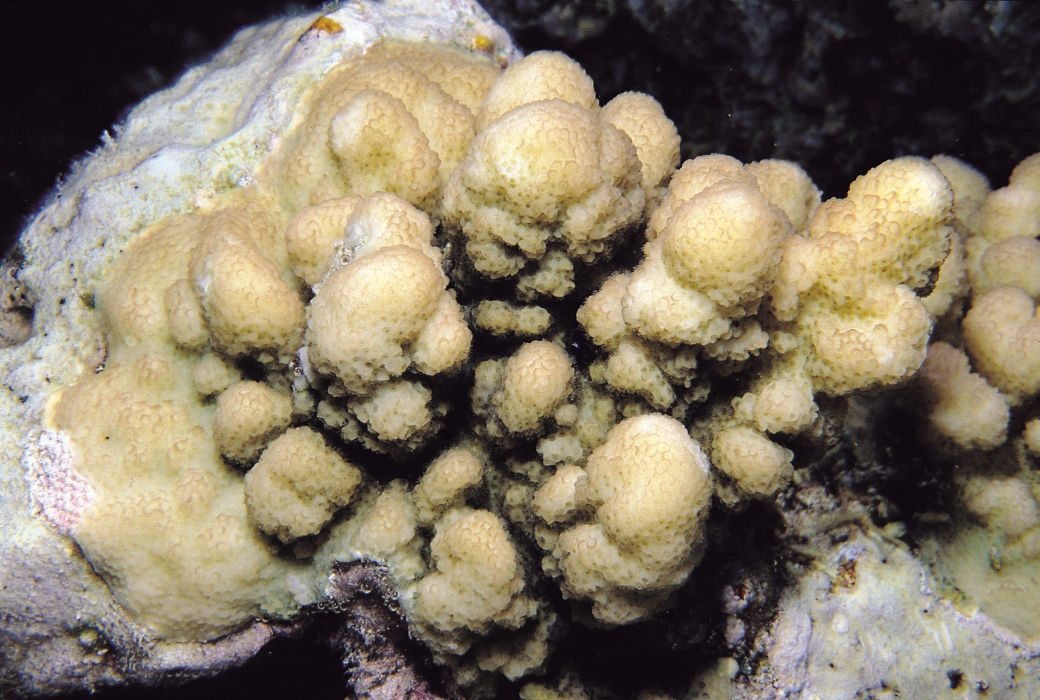
(S. wellsi. Madagascar. https://coral.aims.gov.au/factsheet.jsp?speciesCode=0884)
Pocillopora - Common Name: Poci, Cauliflower Coral, Brush Coral
The final genus of coral I will be discussing is Pocillopora. If you were shocked to find there were 14 species of stylophora, you will be even more shocked to find there are 22 know species of pocillopora.
P. acuta, P. aliciae, P. ankeli, P. bairdi, P. brevicornis, P. capitata, P. damicornis, P. effusus, P. elegans, P. fungiformis, P. grandis, P. indiania, P. inflata, P. kelleheri, P. ligulata, P. mauritiana, P. meandrina, P. molokensis, P. verrucosa, P. vitiensis , P. woodjonesi, and Pocillopora zelli.
Wow! This genus actually shocked me the most. Some of the growth patterns were astounding and beautiful. Unlike seriatoporas and stylophoras, pocis have a rigid and bumpy pattern on its coral branches. Colonies of this species will differ greatly based on conditions such as light and flow. Also unlike corals mentioned previously, species of poci inhabit deep water and the eastern Pacific Ocean. Again, in the name of brevity, I will show a few of the most notable species.
Pocillopora ankeli
- Colonies are small and compact and form short knobby branches. P. ankeli can be found on reefs in Madagascar and the indo-pacific. This species will exhibit dark rust-brown or greenish-brown colorations. A very unique species.
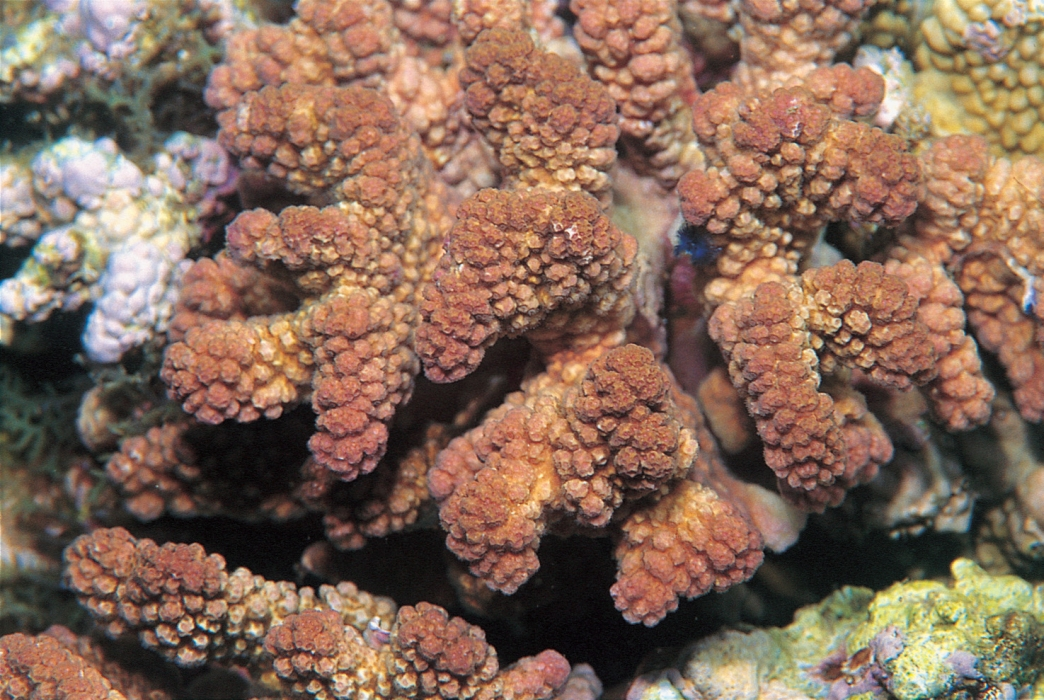
(P. ankeli. Philippines. https://coral.aims.gov.au/factsheet.jsp?speciesCode=0857)
Pocillopora capitata
- This species forms long branches and will grow taller than ‘traditional’ pocis, growing in shallow reefs of the eastern-Pacific. Personally, I never knew pocis grew like this. The picture blow almost looks like an acropora.
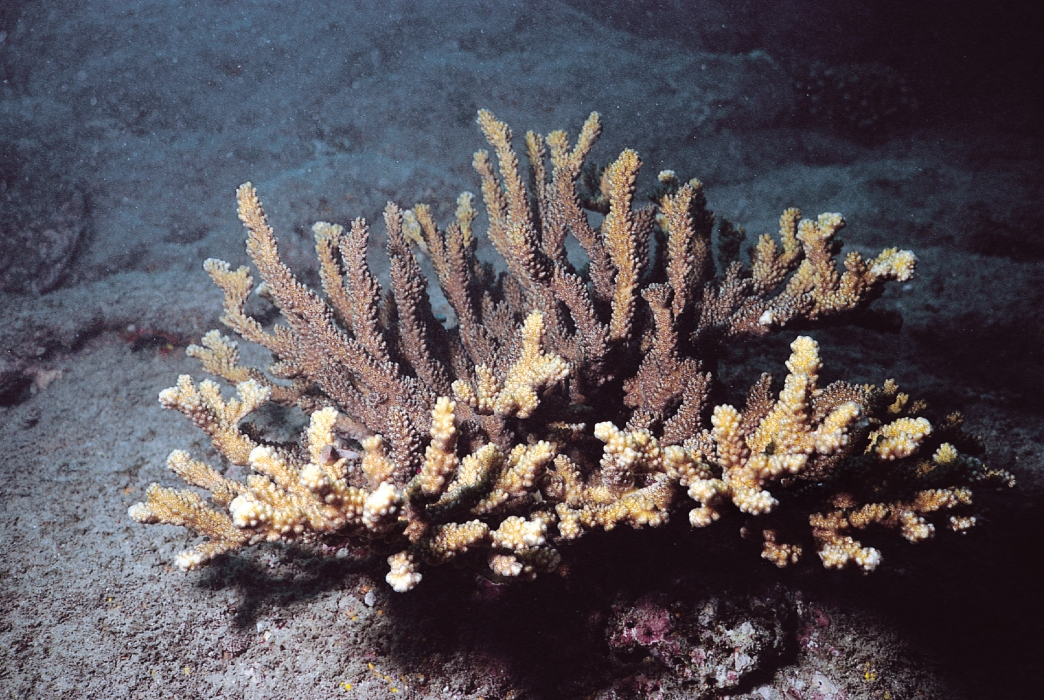
(P. capitata. Galapacos Island. https://coral.aims.gov.au/factsheet.jsp?speciesCode=0685)
Pocillopora damicornis
- P. damicornis is a common species in the home aquarium. Colonies will grow in compact clumps and can measure several metres across in the wild. If exposed to current, the branches will be highly compact and sturdy. Adversely, in protected environments, the coral will grow thinner branches. Amazing!
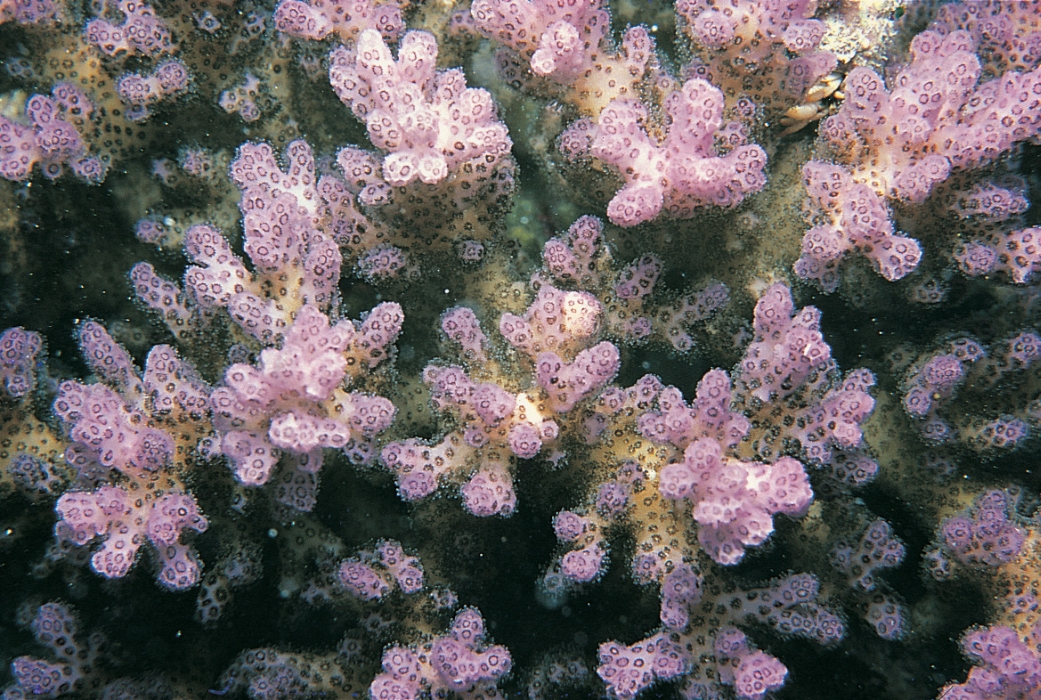
(P. damicornis. Ashmore Reef, western Australia. https://coral.aims.gov.au/factsheet.jsp?speciesCode=0307)
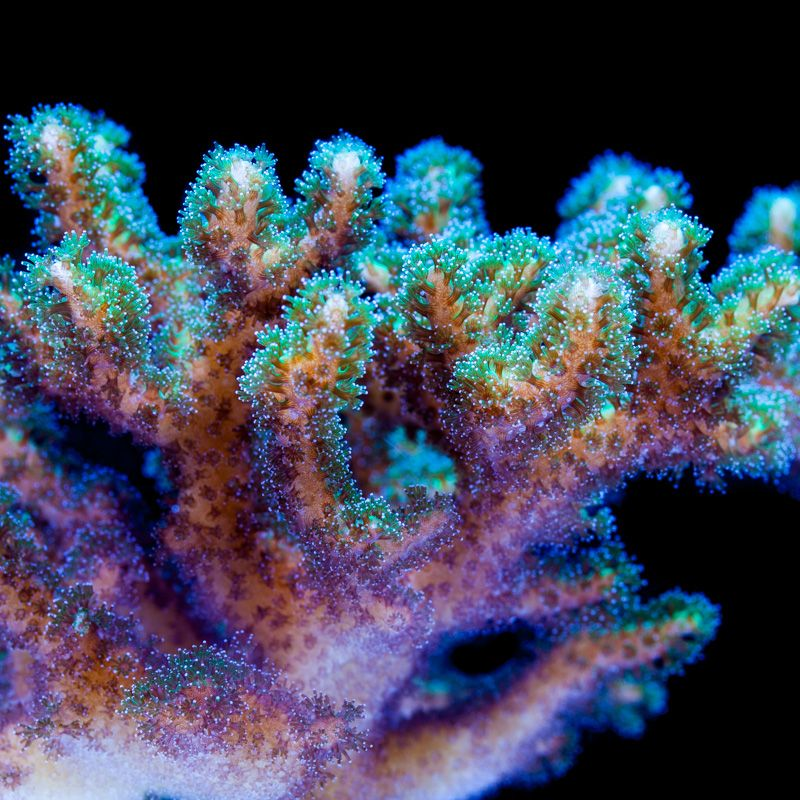
(a frag of P. damicornis for sale by Tidal Gardens. https://www.tidalgardens.com/stock-green-pocillopora-damicornis.html)
Pocillopora elegans
- This species will grow in compact clumps with thick upright branches. Although it may appear stylo-esque, you can see how rigid and bumpy the coral is. A truly beautiful coral. This species inhabits shallow reefs in the central indo-Pacific and eastern-Pacific. I really want a frag...
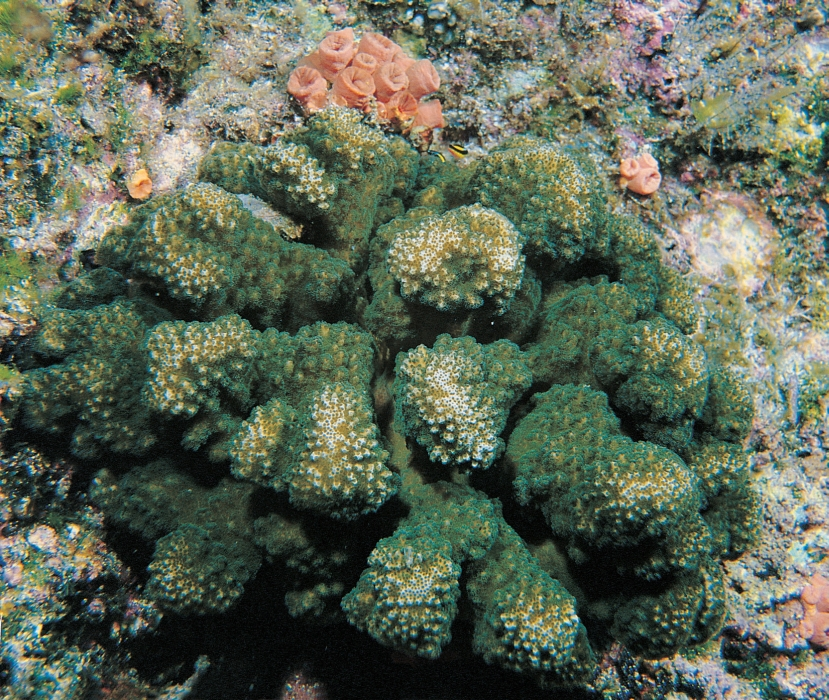
(P. elegans. https://coral.aims.gov.au/factsheet.jsp?speciesCode=0772)
Pocillopora verrucosa
- This species is extremely abundant and forms small colonies all over the Pacific Ocean. Branches will be thick or thin depending on current. Colors range from browns, to pinks, to sometimes blue.
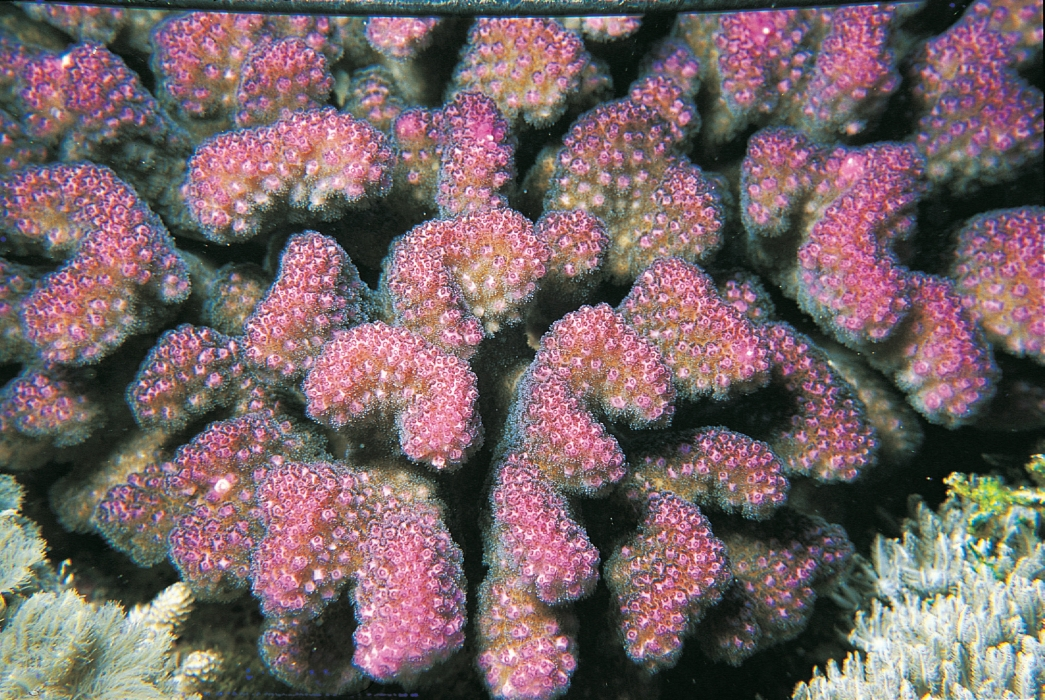
(P. verrucosa. Australia. https://coral.aims.gov.au/factsheet.jsp?speciesCode=0310)
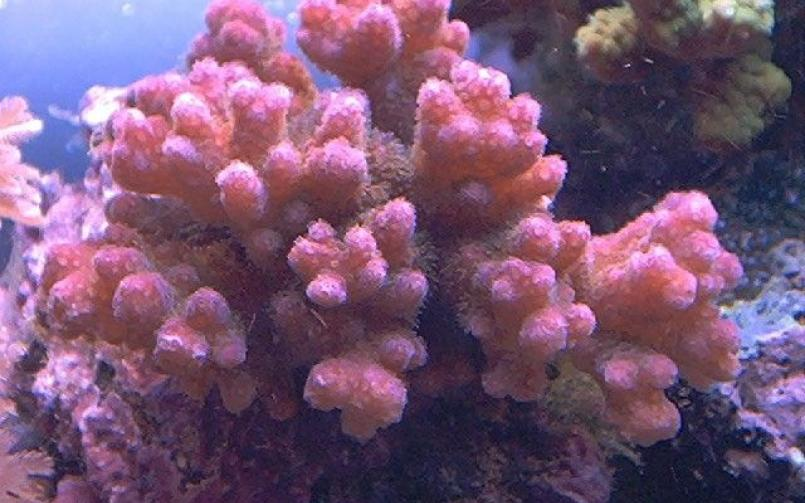
(P. verrucosa in a home aquarium. http://www.melevsreef.com/critter/pocillopora-verrucosa)
____________________________________________________________________
I hope this information was useful. As stated earlier, I was doing research and I was blow away with how many species there actually were. I'd love to see pictures of member colonies and frags.
Sources are linked underneath each picture.
Thanks.
I love all SPS corals, however I have a slight obsession with seriatopora, stylophora, and pocillopora species. I have kept all types of SPS, but these have always been my favorite. I am always looking for new additions, but I find it very difficult to locate places where I can find truly unique ones.
For example, I bought a frag of a yellow stylo with white polyps from a shop in Canada (raging reef) and brought it back into the US. I housed it in my IM 20 for a couple months while I was attending college, and when it came time to bring it back to my 90 display in Connecticut, it died in transit. It was beautiful and I was devastated, and unfortunately, I have not found another one like it. I want to create a database (of sorts) of these types of corals. Pictures, vendor names, scientific names, experiences, care, stories, what have you. I always find myself searching deep on the internet for new types, however, it always amazes me what members already have. All content is welcome.
Research turned into a write up for me. I was shocked at the amount of coral out there! Regardless, I just figured this would be important information to put on an all things stylo, poci, and birdsnest thread. Hopefully you all find this as interesting as I did. Below I will outline this family of coral. I am not a scientist, but I will attempt to explain the types and provide pictures for context.
To Start:
Seriatoporas, stylophoras, and pocilloporas, often shortened to stylos, pocis, and birdsnest (reef slang to encompasses the entire family of seriatorporas) are a genus of coral that belong to the family of Pocilloporidae. All corals in the family of Pocilloporidae are native to the Pacific and Indian Oceans. Corals in this family generally inhabit shallow reefs. These species are known to be hardy and often survive bleaching events in the ocean (hence their hardiness in the home aquarium).
Seriatopora - Common Name: Birdsnest
There are six known species of seriatopora. Often titled the birdsnest coral, this species grows on shallow reefs, and is best known for its erratic growth patterns.
Seriatopora aculeata
- This species is native to the Indo-Pacific and West Pacific, growing in shallow reef environments at depths up to 40 meters. This is an uncommon seriatopora species. Colonies possess pencil-thick, short and tapered branches, that usually fuse into clumps. Colonies are often pink or cream in color.
(S. aculeata. https://www.fisheries.noaa.gov/species/seriatopora-aculeata-coral)
(S. aculeata, Solomon Islands. https://coral.aims.gov.au/factsheet.jsp?speciesCode=0722)
Seriatopora caliendrum
- S. caliendrum is a common species both in the wild and in the reefing hobby. It grows in a bushy clump, forming the quintessential birdsnest pattern. It inhabits shallow water in the Indo-Pacific on reef slopes at depths up to 25 meters. Colors range from cream, to pink, to green.
(A wild S. aculeata. Great Barrier Reef, Australia. https://coral.aims.gov.au/factsheet.jsp?speciesCode=0341)
(S. aculeata in captivity. A “green birdsnest coral.”)
Seriatopora dentritica
- This is a newer species, classified in 2000. Similar to other species of birdsnest, it has thin and tapered branches that come to a sharp point. However, the growth pattern differs as branches are widely spaced and are less than 4 inches long. Additionally, polyps only extended at night, giving it an almost acropora like appearance.
(S. dendritica.Papua New Guinea. http://coral.aims.gov.au/factsheet.jsp?speciesCode=0764)
(S. dendritica, in cativity. https://reefbuilders.com/2018/11/14/seriatopora-dendritica/)
The picture above has been taken from a ‘reefbuilders.com’ article dated November 2018. Apparently this S. dendritica species was collected from Australia and placed in captivity.
Seriatopora guttatus
- Unlike other species of seriatopora, S. guttatus has thick branches with rounded tips. This species is native to the western Indo-Pacific region. It grows in shallow water on sheltered reef slopes to depths of 40 meters.
(S. guttatus.Indonesia. http://coral.aims.gov.au/factsheet.jsp?speciesCode=0809)
(S. guttatus colony in the home aquarium. https://reeftank.devonmorton.com/2014/02/02/green-ora-birdsnest-coral-seriatopora-guttatus/)
Seriatopora hystrix
- S. hystrix possesses pointy needle like branches and grows in a wild clump. It is native to the Indo-Pacific region and inhabits reefs and reef flats at depths between 3 and 15 meters.
(Wild S. hystrix. http://coral.aims.gov.au/factsheet.jsp?speciesCode=0342)
(a pink S. hystrix in the home aquarium. http://www.rl180reef.com/gallery/livestock/sps-corals/30-seriatopora/116-seriatopora-hystrix)
Seriatopora stellata
- This species has pointed tips like that of the hystrix, but has thicker branches (often 4-9 millimeters in width). It grows in shallow water on sheltered reef slopes at depths of around 20 meters in the indo-pacific. Similar to S. dendritica, the polyps of this species only come out at night. Although this species may appear to be similar to S. dendritica, it differs in branch thickness and growth pattern. Unlike S. dendritica, S. stellata grows in a more uniform pattern.
(S. stellata. Taiwan. https://coral.aims.gov.au/factsheet.jsp?speciesCode=0910)
(S. stellata. Palau. http://coral.aims.gov.au/factsheet.jsp?speciesCode=0910)
Stylophora - Common Name: Stylo, Cat's Paw Coral
This species of coral is native to the Red Sea and the Indo-Pacific region. There are 14 known species of stylophora and each possesses unique characteristics.
The 14 are....
S. confusa, S. danae, S. erythraea, S. flabellata, S. gigas, S. granulata, S. kuehlmanni, S. lobata, S. madagascarensis, S. mamillata, S. minuta, S. pistillata, S. subseriata, S. wellsi.
Wow, probably a lot more stylos than you thought right? In the name of brevity, I will cover a few.
Stylophora danae
- Here is a rare species of stylophora that only inhabits the Red Sea, and the Indo-Pacific. Similar to seriatopora species, S. danae grows in an unpredictable pattern and will fuse together. The species is know to be brown in color.
(S. danae. Red Sea. https://coral.aims.gov.au/factsheet.jsp?speciesCode=0885)
Stylophora kuehlmanni
- This is another rare species of stylophora, only inhabiting the Red Sea. S. kuehlmanni has thin branches with raised polyps that give it a spiny appearance. As shown in the picture below, is a truly beautiful species.
(S. kuehlmanni. Red Sea. https://coral.aims.gov.au/factsheet.jsp?speciesCode=0793)
Stylophora madagascarensis
- This species only inhabits reefs around the Island of Madagascar. Colonies have thinner branches, and grow irregularly upward. Like some species of seriatopora mentioned earlier, S. madagascarensis is unique as its polyps only extend at night, giving it an acropora like appearance during the day. It ranges in color from brown to pink, and lives in shallow reef environments and sheltered lagoons, another truly beautiful species.
(S. madagascarensis. Madagascar. https://coral.aims.gov.au/factsheet.jsp?speciesCode=0661)
Stylophora mamillata
- S. mamillata is a unique species as it grows in very small encrusting colonies, often around 6 inches across. The coral will grow small mounds that do not develop into branches. The coral exhibits pink and cream colors and is native to the Red Sea.
(S. mamillata. Red Sea. https://coral.aims.gov.au/factsheet.jsp?speciesCode=0886)
Stylophora pistillata
- S. pistillata is a very common species of stylophora, and may be what you think of when you hear the word stylo. Colonies branch but have club like extensions. This species also exhibits a variety of color, colonies can be blue, pink, brown, green, and purple. This is a shallow water species that is frequently exposed to waves and currents.
(S. pistillata. Great Barrier Reef, Australia. https://coral.aims.gov.au/factsheet.jsp?speciesCode=0345)
(S. pistillata in captivity. https://tropicseanomad.wordpress.com/work/coral-profile/stylophora-pistillata/)
Stylophora subseriata
- Colonies of this species have thinner branches that grow irregularly upwards. This species inhabits the Red Sea, coastal reefs in Africa, and the Indo-Pacific. This species exhibits a variety of colors such as pinks, greens, and browns. Like S. pistillata, this is another common species in the aquarium trade.
(S. subseriata. Papua New Guinea.https://coral.aims.gov.au/factsheet.jsp?speciesCode=0883)
(a frag of S. subseriata. In the home aquarium. https://www.reef2reef.com/threads/is-this-a-stylophora-or-a-pocillopora.91730/)
Stylophora wellsi
- Similar to S. mamillata, S. wellsi also grows in small, clumped, and encrusting colonies. Colonies have short knob like branches with rounded ends. This species inhabits shallow reefs with a lot of wave action and current.
(S. wellsi. Madagascar. https://coral.aims.gov.au/factsheet.jsp?speciesCode=0884)
Pocillopora - Common Name: Poci, Cauliflower Coral, Brush Coral
The final genus of coral I will be discussing is Pocillopora. If you were shocked to find there were 14 species of stylophora, you will be even more shocked to find there are 22 know species of pocillopora.
P. acuta, P. aliciae, P. ankeli, P. bairdi, P. brevicornis, P. capitata, P. damicornis, P. effusus, P. elegans, P. fungiformis, P. grandis, P. indiania, P. inflata, P. kelleheri, P. ligulata, P. mauritiana, P. meandrina, P. molokensis, P. verrucosa, P. vitiensis , P. woodjonesi, and Pocillopora zelli.
Wow! This genus actually shocked me the most. Some of the growth patterns were astounding and beautiful. Unlike seriatoporas and stylophoras, pocis have a rigid and bumpy pattern on its coral branches. Colonies of this species will differ greatly based on conditions such as light and flow. Also unlike corals mentioned previously, species of poci inhabit deep water and the eastern Pacific Ocean. Again, in the name of brevity, I will show a few of the most notable species.
Pocillopora ankeli
- Colonies are small and compact and form short knobby branches. P. ankeli can be found on reefs in Madagascar and the indo-pacific. This species will exhibit dark rust-brown or greenish-brown colorations. A very unique species.
(P. ankeli. Philippines. https://coral.aims.gov.au/factsheet.jsp?speciesCode=0857)
Pocillopora capitata
- This species forms long branches and will grow taller than ‘traditional’ pocis, growing in shallow reefs of the eastern-Pacific. Personally, I never knew pocis grew like this. The picture blow almost looks like an acropora.
(P. capitata. Galapacos Island. https://coral.aims.gov.au/factsheet.jsp?speciesCode=0685)
Pocillopora damicornis
- P. damicornis is a common species in the home aquarium. Colonies will grow in compact clumps and can measure several metres across in the wild. If exposed to current, the branches will be highly compact and sturdy. Adversely, in protected environments, the coral will grow thinner branches. Amazing!
(P. damicornis. Ashmore Reef, western Australia. https://coral.aims.gov.au/factsheet.jsp?speciesCode=0307)
(a frag of P. damicornis for sale by Tidal Gardens. https://www.tidalgardens.com/stock-green-pocillopora-damicornis.html)
Pocillopora elegans
- This species will grow in compact clumps with thick upright branches. Although it may appear stylo-esque, you can see how rigid and bumpy the coral is. A truly beautiful coral. This species inhabits shallow reefs in the central indo-Pacific and eastern-Pacific. I really want a frag...
(P. elegans. https://coral.aims.gov.au/factsheet.jsp?speciesCode=0772)
Pocillopora verrucosa
- This species is extremely abundant and forms small colonies all over the Pacific Ocean. Branches will be thick or thin depending on current. Colors range from browns, to pinks, to sometimes blue.
(P. verrucosa. Australia. https://coral.aims.gov.au/factsheet.jsp?speciesCode=0310)
(P. verrucosa in a home aquarium. http://www.melevsreef.com/critter/pocillopora-verrucosa)
____________________________________________________________________
I hope this information was useful. As stated earlier, I was doing research and I was blow away with how many species there actually were. I'd love to see pictures of member colonies and frags.
Sources are linked underneath each picture.
Thanks.








